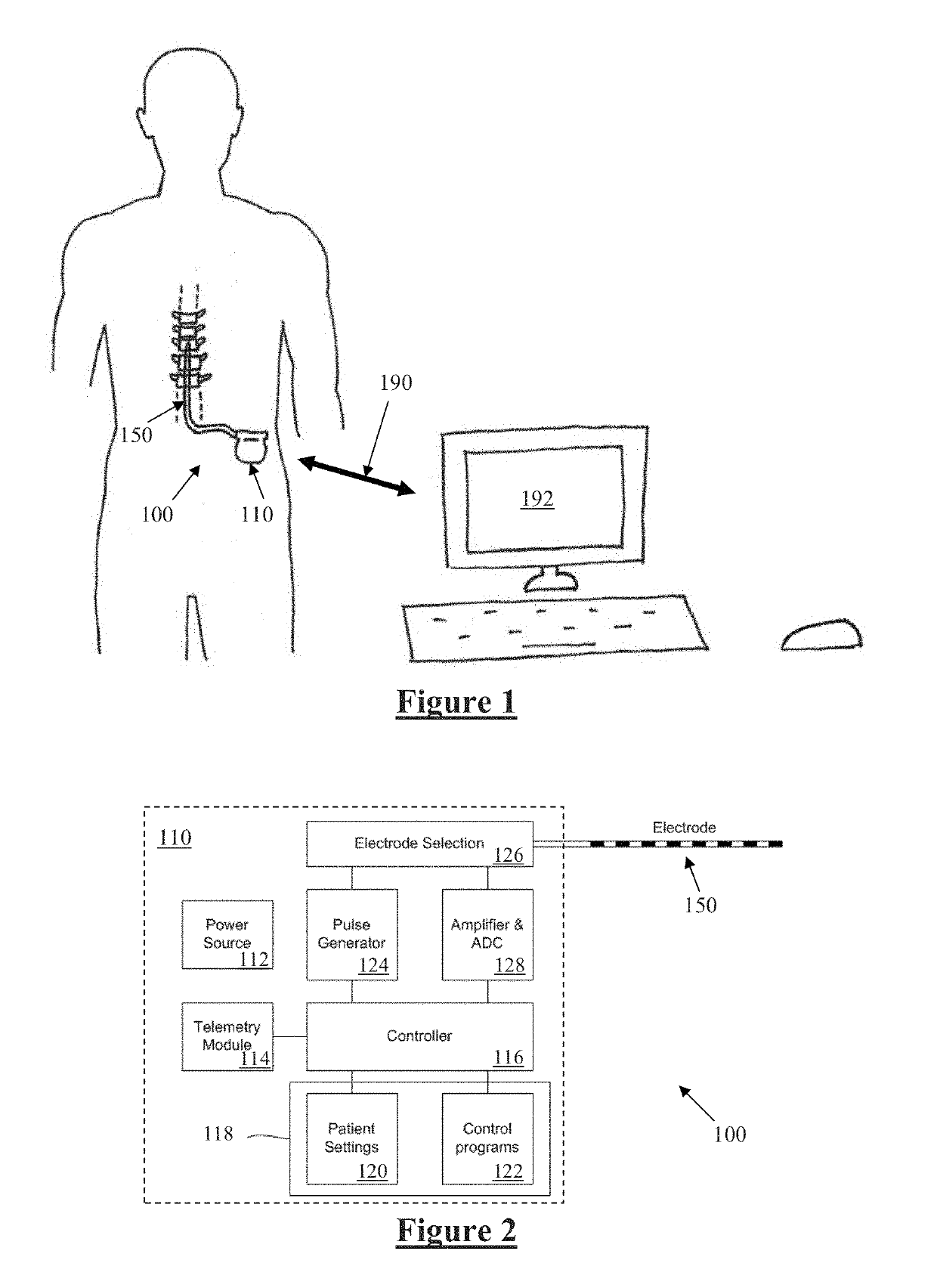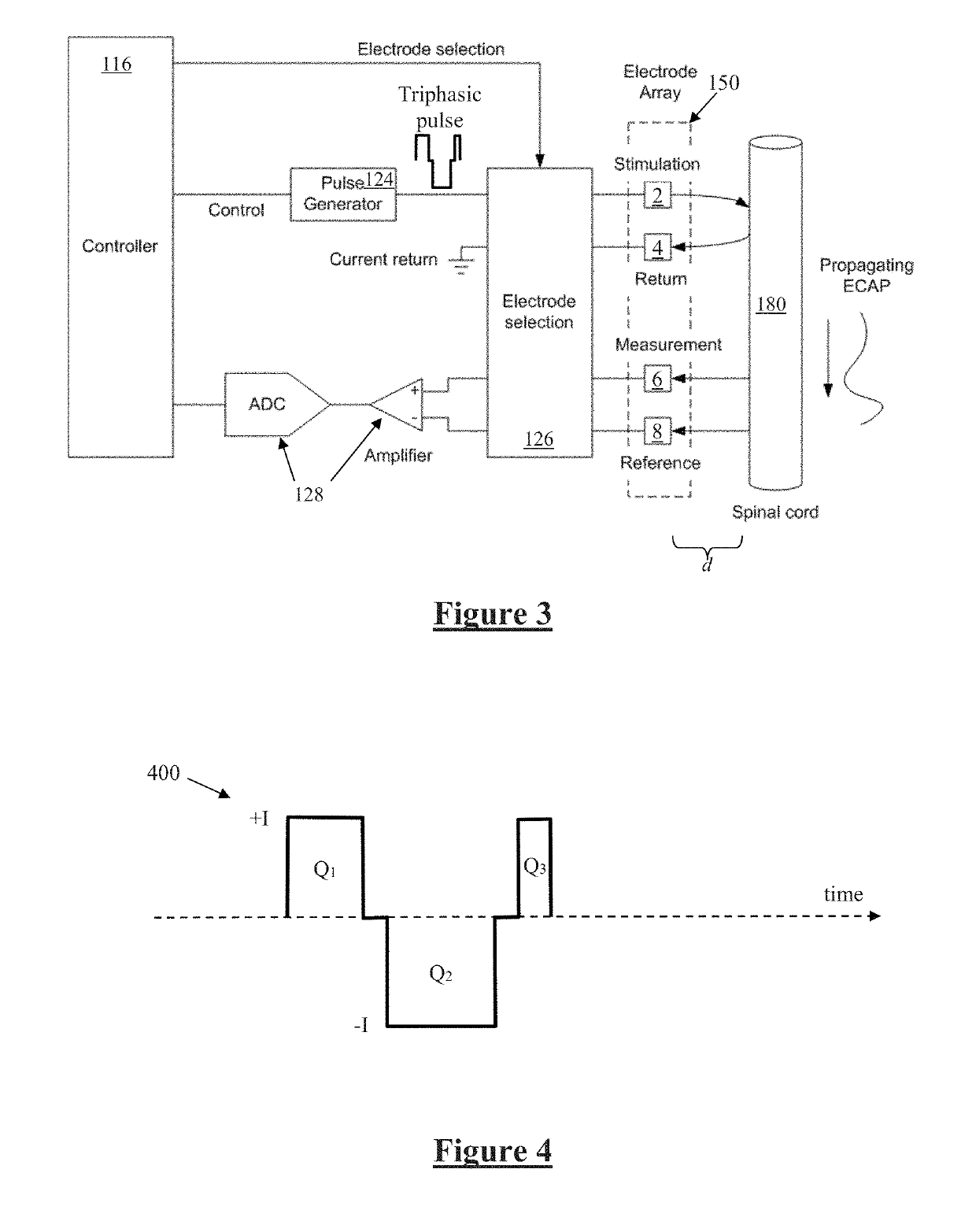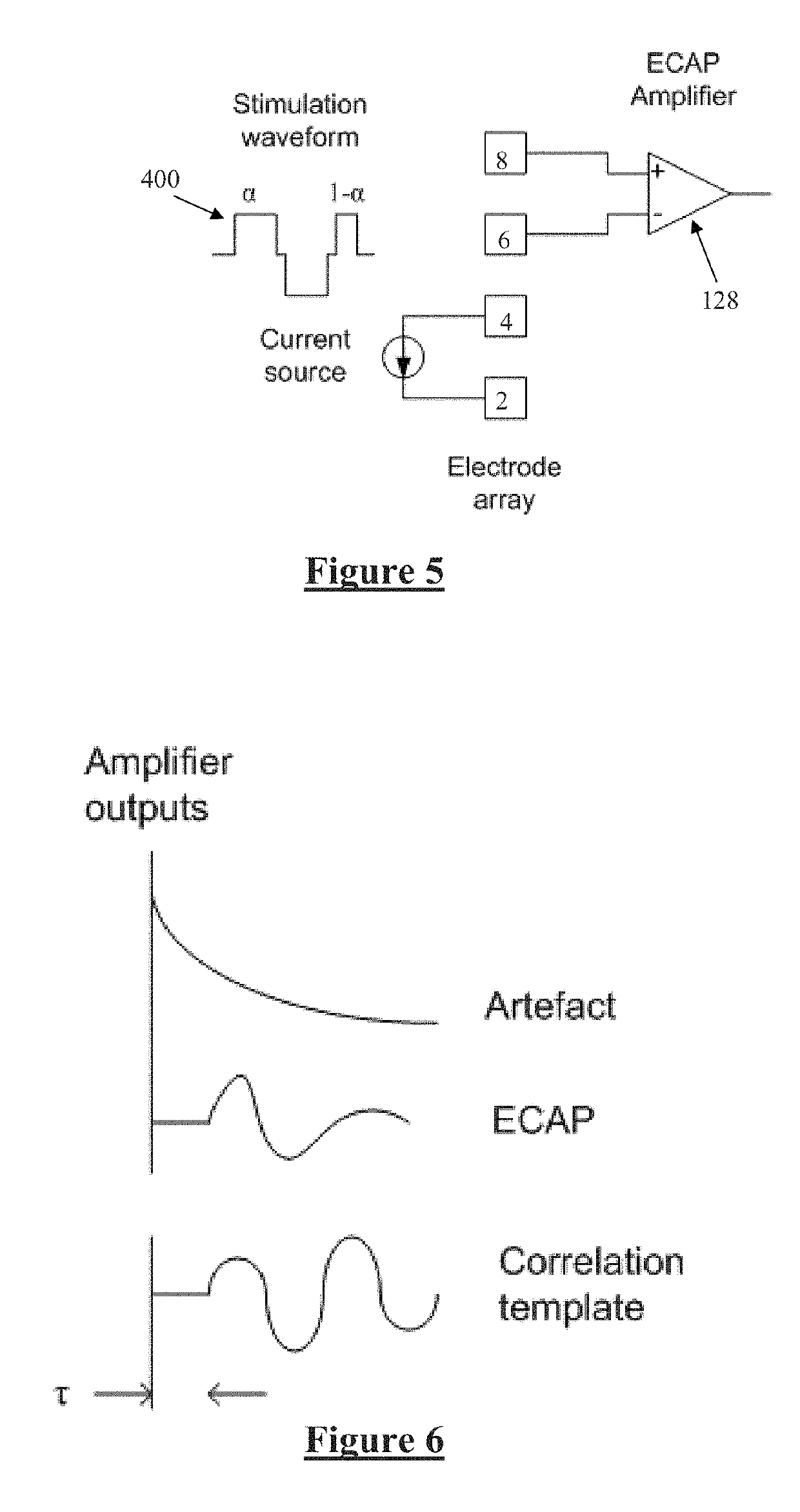Neural Stimulation for Reduced Artefact
a technology of artefact and neural stimulation, applied in the field of neural stimulation, can solve the problems of difficult task, significant obstacle to isolating or even detecting the much smaller cap signal of interest, impracticality of implant system, etc., and achieve the effect of improving the observation of the evoked neural respons
- Summary
- Abstract
- Description
- Claims
- Application Information
AI Technical Summary
Benefits of technology
Problems solved by technology
Method used
Image
Examples
first embodiment
[0073]FIG. 5 schematically illustrates delivery of the stimulus 400 to the neural tissue. In a first embodiment, neural response signals observed by electrodes 6 and 8 are processed by the controller 116 using a dot-product detector, in the manner disclosed in the present applicant's International Patent Publication No. WO2015074121, the content of which is incorporated herein by reference. Beneficially, such embodiments recognise that a dot product detector produces an output that can be positive or negative depending in the relative phase of the artefact and the detector. As shown in FIGS. 6 and 7, and described more fully in WO2015074121 in relation to FIG. 7 of that publication in particular, varying a detector time delay τ influences a phase angle of the observed neural response vector. The present invention further recognises that varying the duty ratio a of stimulus 400 influences the phase angle of the artefact as measured by the detector output. The parameters τ and α thus ...
second embodiment
[0075]In a second embodiment, the neural response signals observed by electrodes 6 and 8 are processed by the controller 116 using peak-to-peak detection. A peak-to-peak detector can only produce a positive value for the artefact. FIG. 9 shows the peak-to-peak artefact for tri-phasic stimulation as a function of the ratio of the first and third pulses. Again, observations were made for four different sense electrodes of the array to produce the four traces of FIG. 9.
[0076]When compared to a biphasic waveform, which has a 0% duty cycle (α=0), extrapolating the graph of FIG. 9 would be expected to give artefact of at least 40 μV. Thus, the variable duty-cycle tri-phasic stimulation produces a trough through the range 0.2<α<0.7), which may be of assistance in some scenarios. However this trough is only a few dB lower than the peak value and so of lesser value than the embodiment of FIG. 8.
[0077]A further particular advantage of some embodiments of the present invention is that the para...
PUM
 Login to View More
Login to View More Abstract
Description
Claims
Application Information
 Login to View More
Login to View More - R&D
- Intellectual Property
- Life Sciences
- Materials
- Tech Scout
- Unparalleled Data Quality
- Higher Quality Content
- 60% Fewer Hallucinations
Browse by: Latest US Patents, China's latest patents, Technical Efficacy Thesaurus, Application Domain, Technology Topic, Popular Technical Reports.
© 2025 PatSnap. All rights reserved.Legal|Privacy policy|Modern Slavery Act Transparency Statement|Sitemap|About US| Contact US: help@patsnap.com



